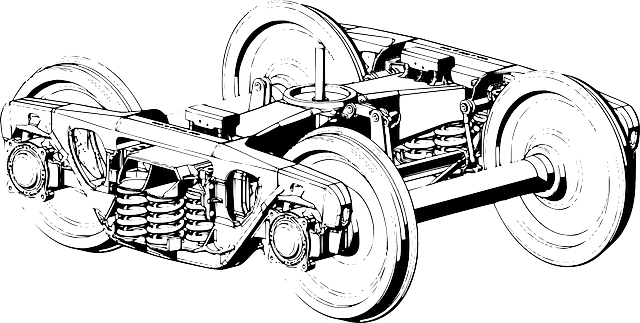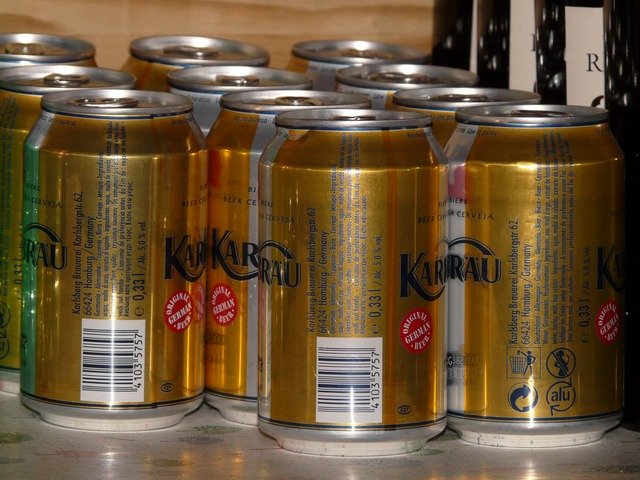خزانة الحالة الصلبة
أداة تخزين بيانات التى تستخدم الحالة الصلبة (ترانزستورية) الذاكرة لتخزين دائم بيانات. وفى خزانات Drives الحالة الصلبة تحاكى خزانات الأقراص الصلبة منفذ، إلى غير ذلك بسهولة يمكن الاستعاضة عنها في معظم التطبيقات. سواقات أقراص الحالة الصلبة تستخدم [[ذاكرة الوصول العشوائي الساكنة |ذاكرة وصول عشوائي ساكنة]] أوذاكرة وصول عشوائى ديناميكية (بدلا من ذاكرة الفلاش) وغالبا ما يطلق عليها سواقة ذاكرة الوصول العشوائي.
الأصل هواستخدام مصطلح الحالة الصلبة (من فيزياء الجوامد) ويشير إلى استخدام أجهزة أشباه الموصلات بدلا من أنابيب الإلكترون ، ولكن في هذا السياق ، تم اعتماد تمييز الحالة الصلبة من الالكترونيات [الكهربائية]] إضافة إلى الأجهزة. بدونأجزاء متحركة , أقراص الحالة الصلبة أقل هشاشة من محركات الأقراص الصلبة وهى أيضا صامتة (عدا طالما إستخدام مروحة للتبريد); حيث لايوجد تأخير ميكانيكى , وهي تستخدم عادة وقت وصول منخفض وحالة الكمون (الهندسية).
SSDs بدأت تظهر في أجهزة الكمبيوتر المحمول, اعتبارا من 2009 على الرغم من أنها أكثر تكلفة بدرجة كبيرة من جميع وحدة حسب قدرتها التخزينية من محركات الأقراص الصلبة (US$580 لكل 256 جبجابايت الأقراص الصلبة ذات الحالة الصلبة, بالمقارنة . US$50 لحجم مشابه قرص صلب خارجى يوإس بى ).
التاريخ
أول أدوات الذاكرة ssd كانت منالفرايت , أووحدات الذاكرة المساعدة كما كانت تسمى في ذلك الوقت, وبرزت في عهد الأنابيب المفرغة بأجهزة الكمبيوتر في ذلك الوقت ر.[بحاجة لمصدر] لكن مع إدخال حشد وحدات التخزين الرخيصة فإن إستخدامهم قد توقف. وفيما بعد, في 1970 و1980, SSDs طورت في وقت مبكر من أشباه الموصلات للذاكرة وأدمجت في الحواسيب الفائقة من آي بي إم, أمدال وكراى; ومع ذلك ، فإن الأسعار مرتفعة للذاكرة المبيتة SSDs جعلتهم نادرا ما تستخدم. في عام 1978 StorageTek وضعت أول نوع حديث من ذاكرات الحالة الصلبة . في منتصف 1980أدخلت سانتا كلارا نظام الذاكرة BatRam. , مجموعة من 1 ميغابايت] [الخط المزدوج في مجموعة DIP| إدارة الحماية]] رقائق ذاكرة الوصول العشوائي ، وعهد حتى يحتذى بطاقة التحكم القرص الصلب. وتضم حزمة بطارية قابلة للشحن للمحافظة على رقائق محتويات الذاكرة عندما لا تعمل بالطاقة طائفة. شارب PC- 5000 ، في عام 1983 ، استخدم 128 كيلوبايت (128) ك) خراطيش الحالة الصلبة تخزين تحتوي على فقاعة الذاكرة.
RAM "disks" were popular as boot media in the 1980s when hard drives were expensive, floppy drives were slow, and a few systems, such as the Amiga series, the Apple IIgs, and later the Macintosh Portable, supported such booting. Tandy MS-DOS machines were equipped with DOS and DeskMate in ROM, as well. At the cost of some main memory, the system could be soft-rebooted and be back in the operating system in mere seconds instead of minutes. Some systems were battery-backed so contents could persist when the system was shut down.
In 1995 M-Systems introduced flash-based solid-state drives. (SanDisk acquired M-Systems in November 2006). Since then, SSDs have been used successfully as hard disk drive replacements by the military and aerospace industries, as well as other mission-critical applications. These applications require the exceptional mean time between failures (MTBF) rates that solid-state drives achieve, by virtue of their ability to withstand extreme shock, vibration and temperature ranges.
Enterprise Flash drives (EFDs) are designed for applications requiring high I/O performance (Input/Output Operations Per Second), reliability and energy efficiency.
On September 25, 2007, Fusion-io announced the ioDrive to be available in Q4 2007, with capacities of 80GB, 160GB and 320GB. The ioDrive actually did not begin shipping until April 7, 2008.
OCZ has recently demoed at Cebit 2009 a 1 TB flash SSD drive utilizing PCI Express x8 interface, it achieves a minimum read speed of 654MB/s and maximum read speed of 712MB/s.
On March 2, 2009, Hewlett-Packard announced the HP StorageWorks IO Accelerator, the world's first enterprise flash drive especially designed to attach directly to the PCI fabric of a blade server. The mezzanine card, based on Fusion-io's ioDrive technology, serves over 100,000 IOPS and up to 800MB/s of bandwidth. HP provides the IO Accelerator in capacities of 80GB, 160GB and 320GB.
In April 2009, Texas Memory System announced the highest capacity rack mounted flash storage unit to date, a 5TB RamSan-620. It has a throughput of 3GB/s and a sustained random read/write of 250,000 I/O's per second (IOPS). It utilizes high-speed Fibre Channel or Infiniband interface for data transfers.
On May 4, 2009, DDRdrive LLC introduced the PCI Express based DDRdrive X1. It integrates both 4GB DRAM and 4GB NAND for a total drive capacity of 4GB and targets direct-attached enterprise storage, achieving up to 300,000+ Random 512B Read IOPS, a power efficiency of 30,000+ IOPS/W, and a cost effectiveness of 200+ IOPS/$.
On May 5, 2009, Photofast announced the G-Monster-PROMISE PCIe SSD with capacity choices from 128GB to 1TB, with 1000MB/s of read/write speeds.
Architecture and function
An SSD is commonly composed of DRAM volatile memory or primarily NAND flash non-volatile memory.
Flash based drive
Most SSD manufacturers use non-volatile flash memory to create more rugged and compact devices for the consumer market. These flash memory-based SSDs, also known as flash drives, do not require batteries. They are often packaged in standard disk drive form factors (1.8-inch, 2.5-inch, and 3.5-inch). In addition, non-volatility allows flash SSDs to retain memory even during sudden power outages, ensuring data persistence. SSDs are slower than DRAM (and some designs are slower than even traditional HDDs on big files), but may perform better than hard drives primarily because of negligible seek time. This is due to the lack of moving parts, which eliminate spin-up time and need for head movement.
Components:
- Cache: A flash based SSD uses a small amount of DRAM as a cache, similar to the cache in Hard disk drives. A directory of block placement and wear leveling data is also kept in the cache while the drive is operating.
- Energy storage: Another component in higher performing SSDs is a capacitor or some form of batteries. These are necessary to maintain data integrity such that the data in the cache can be flushed to the drive when power is dropped; some may even hold power long enough to maintain data in the cache until power is resumed.
The performance of the SSD can scale with the number of parallel NAND flash chips used in the device. A single NAND chip is relatively slow, due to narrow (8/16 bit) asynchronous IO interface, and additional high latency of basic IO operations (typical for SLC NAND - ~25 μs to fetch a 4K page from the array to the IO buffer on a read, ~250 μs to commit a 4K page from the IO buffer to the array on a write, ~2 ms to erase a 256 KB block). When multiple NAND devices operate in parallel inside an SSD, the bandwidth scales, and the high latencies can be hidden, as long as enough outstanding operations are pending and the load is evenly distributed between devices.
Micron/Intel SSD made faster flash drives by implementing data striping (similar to RAID0) and interleaving. This allowed creation of ultra-fast SSDs with 250 MB/s effective read/write, the maximum the SATA interface can manage.
In 2008-03-31, Fusion-IO announced ioDrive, the company's first product, would begin shipping on 2008-04-07. It uses a PCI Express slot to overcome the bandwidth limitation of SATA and SAS interfaces, and the 80GB unit has a read speed of over 800MB/s and write speed of 694MB/s.
SLC versus MLC
Lower priced drives usually use multi-level cell (MLC) flash memory, which is slower and less reliable than single-level cell (SLC) flash memory. This can me mitigated by the internal design structure of the SSD, such as interleaving and more excess capacity for the wear-leveling algorithms to work with.
DRAM based drive
SSDs based on volatile memory such as DRAM are characterized by ultra fast data access, generally less than 0.01 milliseconds, and are used primarily to accelerate applications that would otherwise be held back by the latency of Flash SSDs or traditional HDDs. DRAM-based SSDs usually incorporate internal battery and backup storage systems to ensure data persistence while no power is being supplied to the drive from external sources. If power is lost, the battery provides power while all information is copied from random access memory (RAM) to back-up storage. When the power is restored, the information is copied back to the RAM from the back-up storage, and the SSD resumes normal operation. (Similar to the hibernate function used in modern operating systems.)
These types of SSD are usually fitted with the same type of DRAM modules used in regular PCs and servers, allowing them to be swapped out and replaced with larger modules.
A secondary computer with a fast network or (direct) Infiniband connection can be used as a RAM-based SSD.
DRAM based solid-state drives are especially useful on computers that already have the maximum amount of supported RAM. For example, some computer systems built on the x86-32 architecture can effectively be extended beyond the 4 GB limit by putting the paging file or swap file on an SSD. Owing to the bandwidth bottleneck of the bus they connect to, DRAM SSDs cannot read and write data as fast as main RAM can, but they are far faster than any mechanical hard drive. Placing the swap/scratch files on a RAM SSD, as opposed to a traditional hard drive, therefore can increase performance significantly.
Comparison with hard disk drives
A comparison (with benchmarks) of SSDs, Secure Digital High Capacity (SDHC) drives, and hard disk drives (HDDs) is given in the reference.
Comparisons reflect typical characteristics, and may not hold for a specific device.
Advantages
- Faster start-up, as no spin-up is required (RAM & flash).
- Typically fast random access for reading, as there is no read/write head to move (RAM & flash).
- Extremely low read latency times, as SSD seek-times are orders of magnitude lower than the best hard disk drives, as of 2008. (RAM) In applications where hard disk seeks are the limiting factor, this results in faster boot and application launch times (see Amdahl's law) (RAM & flash).
- Relatively deterministic read performance: unlike hard disk drives, performance of SSDs is almost constant and deterministic across the entire storage. This is because the seek time is almost constant and does not depend on the physical location of the data, and so, file fragmentation has almost no impact on read performance.
- No noise: a lack of moving parts makes SSDs completely silent, apart from cooling fans on a few high-end and high-capacity SSDs.
- For low-capacity flash SSDs, low power consumption and heat production when in active use, although high-end SSDs and DRAM-based SSDs may have significantly higher power requirements (flash).
- High mechanical reliability, as the lack of moving parts almost eliminates the risk of "mechanical" failure (RAM & flash).
- Ability to endure extreme shock, high altitude, vibration and extremes of temperature: once again because there are no moving parts. This makes SSDs useful for laptops, mobile computers, and devices that operate in extreme conditions (flash).
- Larger range of operating temperatures. Typical hard drives have an operating range of 5-55 degrees C. Most flash drives can operate at 70 degrees, and some industrial grade drives can operate over an even wider temperature range.
- For low-capacity SSDs, lower weight and size: although size and weight per unit storage are still better for traditional hard drives, and microdrives allow up to 20 GB storage in a CompactFlash 42.8×36.4×5 mm (1.7×1.4×.2 in) form-factor. Up to 256 GB, as of 2008 SSDs are lighter than hard drives of the same capacity.
- When failures occur, they tend to happen predominantly while writing, or erasing cells, rather than upon reading cells. With magneto-mechanical drives, failures tend to occur while reading. If a drive detects failure on write operations, data can be written to a new location. If a drive fails on read, then data is usually lost permanently.
Disadvantages
- Cost: As of mid-2008, SSD prices are still considerably higher per gigabyte than are comparable conventional hard drives: consumer grade drives are typically US$1.50 to US$3.45 per GB for flash drives and over US$80.00 per GB for RAM-based compared to about US$0.38 or less per gigabyte for hard drives.
- Capacity: As of 2008, far lower than that of conventional hard drives (Flash SSD capacity is predicted to increase rapidly, with experimental drives of 1 TB, but hard drive capacity also continues to expand, and hard drives are likely to maintain their capacity edge for some time).
- Lower storage density: Hard disks can store more data per unit volume than DRAM or flash SSDs, except for very low capacity/small devices.
- Limited write (erase) cycles: Flash-memory cells will often wear out after 1,000 to 10,000 write cycles for MLC, and up to 100,000 write cycles for SLC, while high endurance cells may have an endurance of 1–5 million write cycles (many log files, file allocation tables, and other commonly used parts of the file system exceed this over the lifetime of a computer). Special file systems or firmware designs can mitigate this problem by spreading writes over the entire device (so-called wear leveling), rather than rewriting files in place. In 2008 wear leveling was just beginning to be incorporated into consumer level devices. However, effective write cycles can be much less, because when a write request is made to a particular memory block, all data in the block is overwritten even when only part of the memory is altered. The write amplification, as referred by Intel, can be reduced using write memory buffer. In combination with wear leveling, over-provisioning SSD flash drives with spared memory capacity also delays the loss of user-accessible memory capacity. NAND memory can be negatively impacted by read and program (write) disturbs arising from over accessing a particular NAND location. This overuse of NAND locations causes bits within the NAND block to erroneously change values. Wear leveling, by redirecting SSD writes to lesser-used NAND locations, thus reduces the potential for program or write disturbs. An example for the lifetime of SSD is explained in detail in this wiki.[محل شك] SSDs based on DRAM, however, do not suffer from this problem.
- As a result of wear leveling and write combining, the performance of SSDs degrades with use . Eventually, wear leveling will use each page on the drive at least once, so further writes always involve a block erase. Although write combining (if supported by the device) offers advantages, it causes internal fragmentation in the SSD which degrades the sequential read speed. Such fragmentation cannot be mitigated by the operating system.
- Slower write speeds: As erase blocks on flash-based SSDs generally are quite large (e.g. 0.5 - 1 megabyte), they are far slower than conventional disks during small writes (the smaller, the worse) and can suffer from write fragmentation, and in some cases for sequential writes (HDD generally outperforms SSD in sequential operations if the data are in large chunks). SSDs based on DRAM, which do this several orders of magnitude faster than conventional disks, do not suffer from this problem.
- DRAM-based SSDs require more power than hard disks, when operating; and they still use power when the computer is turned off, while hard disks do not.
Commercialization
Cost and capacity
Until recently,[] flash based solid-state drives were too costly for widespread use in mobile computing.[بحاجة لمصدر] As flash manufacturers transition from NOR flash to single-level cell (SLC) NAND flash and most recently to multi-level cell (MLC) NAND flash to maximize silicon die usage and reduce associated costs, "solid-state disks" are now being more accurately renamed "solid-state drives" - they have no disks but function as drives - for mobile computing in the enterprise and consumer electronics space. This technological trend is accompanied by an annual 50% decline in raw flash material costs, while capacities continue to double at the same rate. As a result, flash-based solid-state drives are becoming increasingly popular in markets such as notebook PCs and sub-notebooks for enterprises, Ultra-Mobile PCs (UMPC), and Tablet PCs for the healthcare and consumer electronics sectors. Major PC companies have now started to offer such technology.
Availability
Solid-state drive (SSD) technology has been marketed to the military and niche industrial markets since the mid-1990s [بحاجة لمصدر].
Along with the emerging enterprise market, SSDs have been appearing in ultra-mobile PCs and a few lightweight laptop systems, adding significantly to the price of the laptop, depending on the capacity, form factor and transfer speeds. As of 2008 some manufacturers have begun shipping affordable, fast, energy-efficient drives priced at $350 to computer manufacturers.[بحاجة لمصدر] For low-end applications, a USB flash drive may be obtained for $10 to $100 or so, depending on capacity, or a CompactFlash card may be paired with a CF-to-IDE or CF-to-SATA converter at a similar cost. Either of these requires that write-cycle endurance issues be managed, either by not storing frequently written files on the drive, or by using a Flash file system. Standard CompactFlash cards usually have write speeds ofسبعة to 15 megabytes per second while the more expensive upmarket cards claim speeds of up to 40 MB/s.
One of the first mainstream releases of SSD was the XO Laptop, built as part of the 'One Laptop Per Child' project. Mass production of these computers, built for children in developing countries, began in December 2007. These machines use 1024 MiB SLC NAND flash as primary storage which is considered more suitable for the harsher than normal conditions in which they are expected to be used. Dell began shipping ultra-portable laptops with SanDisk SSDs on April 26, 2007.Asus released the Eee PC subnotebook on October 16 2007, and after a successful commercial start in 2007, expects to ship several million PCs in 2008, with 2, أربعة orثمانية gigabytes of flash memory. On January 31, 2008, Apple Inc. released the MacBook Air, a thin laptop with optional 64 GB SSD. The Apple store cost was $999 more for this option, as compared to that of an 80 GB 4200 rpm Hard Disk Drive. Another option - Lenovo ThinkPad X300 with a 64Gbyte SSD - was announced by Lenovo in February 2008, and is, as of 2008, available to consumers in some countries. On August 26, 2008, Lenovo released ThinkPad X301 with 128GB SSD option which adds approximately $200 US.
As of October 14, 2008, Apple's MacBook and MacBook Pro lines carry optional solid state hard drives of up to 256 GB at an additional cost. Dell began to offer optional 256 GB solid state drives on select notebook models in January 2009.
In late 2008, Sun released the Sun Storage 7000 Unified Storage Systems (codenamed Amber Road), which use both solid state drives and conventional hard drives to take advantage of the speed offered by SSDs and the economy and capacity offered by conventional hard disks.
Quality and performance
SSD is still currently a developing technology. A January 2009 review of the market by technology reviewer Tom's Hardware concluded that comparatively few of the tested devices showed acceptable I/O performance, with several disappointments, and that Intel (who make their own SSD chipset) still produce the best performing SSD drive as at this time, a view also echoed by Anandtech. In particular, operations that require many small writes, such as log files, are particularly badly affected on some devices, potentially causing the entire host system to freeze for periods of up to one second at a time.
According to Anandtech, this is due to controller chip design issues with a widely used set of components, and at least partly arises because most manufacturers are memory manufacturers only, rather than full microchip design and fabrication businesses - they often rebrand others' products, inadvertantly replicating their problems. Of the other manufacturers in the market, Memoright, Mtron, OCZ, Samsung and Soliware were also named positively for at least some areas of testing.
The overall conclusion by Tom's Hardware however, was that "none of the [non-Intel] drives was really impressive. They all have significant weaknesses: usually either low I/O performance, poor write throughput or unacceptable power consumption".
Applications
A use for flash drives is to run lightweight operating systems designed specifically for turning general-purpose PCs into network appliances comparable to more expensive routers and firewalls. In this situation, a write protected flash drive containing the whole operating system is used to boot the system. A similar system could boot from CD, floppy disk or a traditional hard drive but flash memory is a good choice because of very low power consumption and failure rate.
Hybrid drive
A hybrid disk uses an SSD as a buffer for a larger hard disk drive. The hard disk may be spun down more of the time if data is available in the SSD.
NAND Flash based SSDs offer a potential power savings, however the typical pattern of usage of normal operations result in cache misses in the NAND Flash as well leading to continued spin of the drive platter or much longer latency if the drive needed to spin up.[بحاجة لمصدر] These devices would be slightly more energy efficient but could not prove to be any better in performance.[بحاجة لمصدر]
DRAM-based SSDs may also work as a buffer cache mechanism (see hybrid RAM drive). When data is written to memory, the corresponding block in memory is marked as dirty, and all dirty blocks can be flushed to the actual hard drive based on the following criteria:
- Time (e.g., everyعشرة seconds, flush all dirty data);
- Threshold (when the ratio of dirty data to SSD size exceeds some predetermined value, flush the dirty data).
- Loss of power/computer shutdown.
SSDs and Microsoft Windows
Windows is optimized for hard disk drives rather than SSDs. Microsoft created ReadyBoost to exploit characteristics of USB-connected flash devices, but Windows operating systems are not optimized for use of SSDs. Microsoft's latest OS Windowsسبعة which is now in RC, is optimized for SSDs as well as hard disks.
SSDs and ZFS
Solaris, as of 10u6 (released in October 2008), and recent versions of OpenSolaris and Solaris Express Community Edition on which OpenSolaris is based, can use SSD drives as a performance booster for ZFS. There are two available modes -- using an SSD for the ZFS Intent Log (ZIL), which is used every time a write to the disk occurs, or for the L2ARC (Level 2 Adaptive Replacement Cache), which is used to cache data for reading. When used either alone or in combination, large increases in performance are generally seen.
انظر أيضاً
- Hybrid drive - A hard disk which uses a solid-state drive to improve performance.
- Computer storage
- Flash file system
- List of solid-state drives
الهامش
- ^ Aughton, Simon (2007-04-25). "Dell Gets Flash With SSD Option for Laptops". IT PRO.
- ^ Macbook Air Specifications
- ^ http://www.pricewatch.com/hard_removable_drives/
- ^ IBM User's Guide, Thirteenth Edition
- ^ http://www.fusionio.com/PDFs/Pressrelease_SANinhand.pdf
- ^ http://www.fusionio.com/PDFs/Storage_pressrelease_final.pdf
- ^ http://www.tomshardware.com/news/OCZ-Z-Drive-RAID,7181.html
- ^ http://h18006.www1.hp.com/products/storageworks/io_accelerator/index.html?jumpid=reg_R1002_USEN
- ^ http://www.channelregister.co.uk/2009/04/22/tms_5tb_ssd/
- ^ http://www.ramsan.com/products/ramsan-620.htm
- ^ http://www.ddrdrive.com/ddrdrive_press.pdf
- ^ http://www.ddrdrive.com/ddrdrive_brief.pdf
- ^ http://www.ddrdrive.com/ddrdrive_bench.pdf
- ^ http://www.pcper.com/article.php?aid=704
- ^ http://www.tomshardware.com/news/PhotoFast-SSD-PCI-e,7719.html
- ^ What is a Solid State Disk?
- ^ Flash SSD with 250 MB/s writing speed
- ^ Fusion-io Announces Breakthrough in Storage with Availability of the Company's ioDrive.
- ^ Review of the Fusion-IO IODrive 80GB SSD
- ^ Lucas Mearian (August 27, 2008). "Solid-state disk lackluster for laptops, PCs". Retrieved 2009-03-11.
خطأ استشهاد: وسم
<ref>غير صالح؛ الاسم "CWorldLackluster" معهد أكثر من مرة بمحتويات مختلفة. - ^ Are MLC SSDs Ever Safe in Enterprise Apps?
- ^ RIndMA Disk
- ^ Jackson, Jerry (2008-02-17). "SDHC Cards vs Hard Drive vs SSD". NotebookReview.com, TechTarget.
-
^ Markoff, John (2008-12-11). "Computing Without a Whirring Drive". The New York Times. p. B9.
Using a standard Macintosh performance measurement utility called Xbench, the Intel solid-state drive increased the computer’s overall performance by almost half. Disk performance increased fivefold.
- ^ Radding, Alan. "Solid-state storage finds its niche". StorageSearch.com. Retrieved 2007-12-29. Registration required.
- ^ Meyev, Aleksey (2008 -04-23). "SSD, i-RAM and Traditional Hard Disk drives". X-bit labs. Check date values in:
|date=(help) - ^ AnandTech: Super Talent SSD: 16GB of Solid State Goodness
- ^ "SSD vs HDD". SAMSUNG Semiconductor.
- ^ "Memoright SSDs: The End of Hard drives?". Retrieved 2008-08-05.
- ^ "Performance Showdown: SSDs vs HDDs".
- ^ Shah, Agam (2008-05-30). "Seagate plans SSD, 2 TB hard drive for next year". Computerworld. Retrieved 2008-05-30.
- ^ "Imperial Technology Announces One Terabyte SSD". Imperial Technology Inc.
- ^ "SDS Offers 1TB SSD" (Press release). Solid Data Systems, Inc. 2007-07-17.
- ^ "Flash Memory vs. Hard Disk drives - Which Will Win?". Retrieved 2008-11-17.
- ^ Kerekes, Zsolt. ". StorageSearch.com.
- ^ No SWAP Partition, Journaling Filesystems, … on a SSD?
- ^ SSD’s, Journaling, and noatime/relatime
- ^ Corbet, Jonathon (2007-05-15). "LogFS". Linux Weekly News.
- ^ Inside the X25-M Controller: Wear Leveling, Write Amplification Control
- ^ SSD flash drives enter the enterprise
- ^ "The SSD Anthology: Understanding SSDs and New Drives from OCZ". AnandTech.com. 2009-03-18.
- ^ "Long-term performance analysis of Intel Mainstream SSDs". PC Perspective. 2009-02-13.
- ^ Dumitru, Douglas (2007-08-16). "Understanding Flash SSD Performance" (PDF). EasyCo LLC.
- ^ Schmid, Patrick (2007-11-07). "HyperDrive أربعة Redefines Solid State Storage : HyperDrive أربعة - The Fastest Hard Disk In The World?". Tom's Hardware.
- ^ Chen, Shu-Ching Jean (2007-06-07). "$199 Laptop Is No Child's Play". Forbes. Retrieved 2007-06-28.
- ^ "Road Warriors Get Ready – Lenovo Delivers "No Compromises" Ultraportable ThinkPad X300 Notebook PC" (Press release). Lenovo. 2008-02-26.
- ^ "Solaris ZFS Enables Hybrid Storage Pools: Shatters Economic and Performance Barriers" (PDF). Sun Microsystems. Retrieved 2009-04-09.
- ^ "Six New SSDs: Can Intel Be Dethroned?". Tom's Hardware. January 28, 2009. Retrieved 2009-04-21.
-
^ "Intel X25-M SSD: Intel Delivers One of the World's Fastest Drives". Anandtech. September 8th, 2008. Retrieved 2009-04-21. Check date values in:
|date=(help) -
^ "Intel X25-M SSD: Intel Delivers One of the World's Fastest Drives". Anandtech. September 8th, 2008. pp. Delving Deeper. Retrieved 2009-04-21. Check date values in:
|date=(help) -
^ "Intel X25-M SSD: Intel Delivers One of the World's Fastest Drives". Anandtech. September 8th, 2008. pp. The Generic SSD. Retrieved 2009-04-21. Check date values in:
|date=(help) -
^ "Intel X25-M SSD: Intel Delivers One of the World's Fastest Drives". Anandtech. September 8th, 2008. pp. Enter the Poorly Designed MLC. Retrieved 2009-04-21. Check date values in:
|date=(help) - ^ Tony Smith. "If your SSD sucks, blame Vista, says SSD vendor". Retrieved 2008-10-11.
- ^ "Samsung, Microsoft in talks to speed up SSDs on Vista". Retrieved 2008-09-22.
- ^ >David Flynn. "Windowsسبعة gets SSD-friendly". Retrieved 2009-01-29.
للاستزادة
- (PDF). pricegrabber.com. p. 7. Retrieved 2009-01-28.
وصلات خارجية
History
- STORAGEsearch.com
Products Currently Available
- SANDirect.com - SSD and NAND
- MemoryDepot.com/ssd - Disk on Module and Solid State Storage Disk Drive 1.8" and 2.5" based on SLC and MLC Nand Flash Chips
Technology Adoption
- JEDEC Continues SSD Standardization Efforts
















